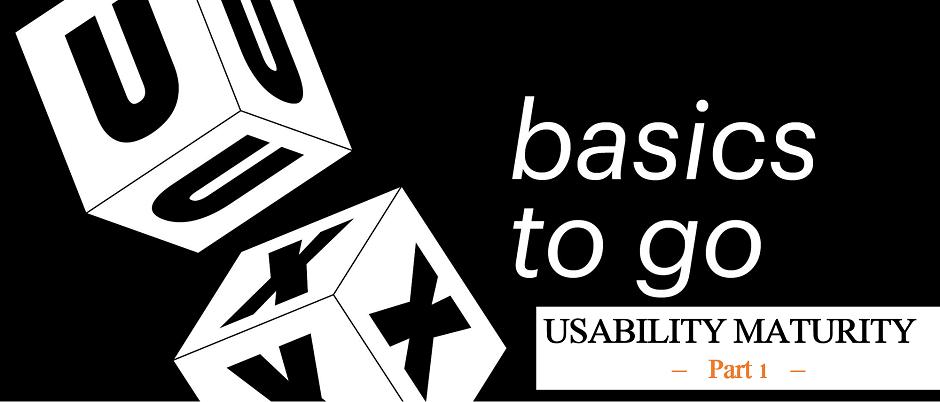Wir haben leider kein passendes Ergebnis gefunden.
UX Basics to go: Usability Maturity (Part 1)


Today we look at: Usability Maturity
While the awareness of the importance of usability has grown steadily in recent years, the integration and establishment of a systematic human-centered design process within an organization is often still in its very beginning.
Or, have you ever consciously asked yourself the question: How open-minded is your company regarding usability activities and findings?
An answer to this question could be the classification into an usability maturity model.
As already known from other models, there is no "ONE" model. In this article we would like to introduce to you the 4-stage usability maturity model of the International Usability and UX Qualification Board (short: UXQB). Depending on how granular the classification should be, you will also find a 5-, 6- or even 7-level model on this topic.
According to the official definition of UXQB, the term Usability Maturity is used to describe …
„The level of understanding and implementation of a systematic human-centered design process within an organization. “
In general, the integration of human-centered processes into existing organizational structures does not take place overnight, rather in stages. The UXQB has developed a model that describes the steps of usability maturity in the organization.
Step 1 “incomplete”: Awareness may already exist, but the motivation for implementation is still lacking.
At this level the human-centered design process is not implemented, or fails to achieve its process purpose. There is little evidence of any systematic achievement of the process purpose. Project managers classify usability as important, but when it comes to providing resources (budgets, time etc.), everything has to be questioned again. Usability is fine if it comes for free, but no one is committed to delivering it.
Step 2 “performed”: Usability is achieved by enthusiastic individuals using ad-hoc processes.
In second degree of maturity, the human-centered design process is driven by some individuals in the organization. However, the process has not yet fully arrived and is not completely established at the organizational level.
Step 3 “managed”: Processes of human-centered design become a fixed component at the organizational level.
The base is given and the human-centered design process is implemented in a managed fashion. The process is planned, monitored and adapted at company level. Usability is no longer "nice-to-have" but "must-have".
Step 4 “innovating”: Usability is an essential part of the organizational strategy.
The process of human-centered design has become an integral component of organizational culture. The developed processes are continuously improved in order to be able to react to any changes.
Once you have become familiar with the 4-step model you might be able to answer the introductory question: So, at which stage of maturity is your company?
If you are not yet satisfied with the maturity stage of your own company you can read here how to improve and encourage it in practice.
Want to know more about UX?
Do you want to go directly deeper into the subject of usability? Maybe you are interested in our Facit Digital User Experience Seminar. In this two-day training you can acquire all basic knowledge around usability and user experience. More information at uxtraining@facit-group.com.
